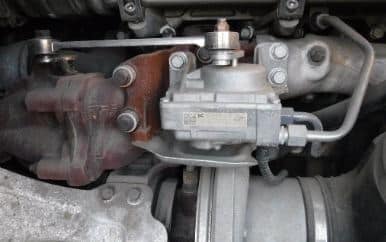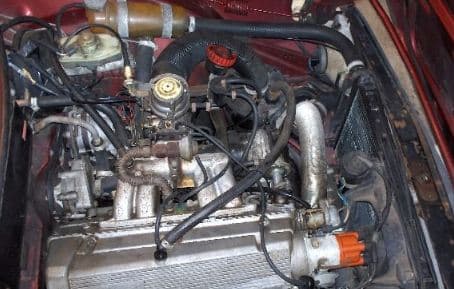
Table of Contents
Intro
Motor vehicle emissions are turning out to become a more substantial part of each person’s life which is associated with the automotive industry.
This is primarily true of those that must service the modern motor vehicle. Ever since emissions controls were introduced in the mid-1960s, numerous types of pollution control devices have been developed.
These systems have been supplemented with several other methods that have led to a complicated array of wires, tuning, and vacuum hoses that are found by propping the hood of most motor vehicles today.
One of these devices is the Exhaust Gas Recirculation (EGR) valve. DO NOT EGR DELETE
The exhaust gas recirculation valve commonly known as the EGR is a nitrogen oxide emissions reduction method. It is most commonly found in petrol/gasoline, and diesel fuel powered engines. It is the intent of many diesel and gasoline truck owners to delete the EGR valve, but we intend to explain the principles of our DO NOT EGR DELETE philosophy.
The TRUTH about EGR Delete!
What is EGR Delete?
EGR delete is the removal, bypass, defeat, disconnect, damage or in any way rendering ineffective the exhaust gas recirculation device on a motor vehicle.
EGR delete is a form of tampering because deliberately doing anything to prevent the EGR valve from working correctly meets the definition.
What is EGR Delete
Some EGR delete enthusiasts recommend disconnecting vacuum lines and or electrical/mechanical parts of the exhaust gas recirculation system such as EGR solenoids, sensors, or vacuum activated valves.
EGR delete is also classified as adjusting any part of a car or truck, so it no longer meets the manufacturer’s original specifications. In this case, EGR Delete will void your warranty. The warranty on your vehicle may also be voided if you use leaded gasoline instead of unleaded fuel for your car.
Installing an incorrect exhaust gas recirculation valve as a replacement or even a turbocharger is also considered tampering.
Pros of EGR Delete Kits
- These kits are very easy to install on most diesel engines.
- You can drastically improve your fuel efficiency with an EGR delete.
- These kits will go a long way in lowering the temperature of your engine.
Cons of EGR Delete Kits
- An EGR delete kit can increase your exhaust gas temperature.
- The use of these kits is not street legal in the United States. Using one can cause you to fail your state’s emission tests.
- It may reduce your overall horsepower.
- The use of these kits can cause your engine to start knocking.
- These kits are costly and in general, the cost is as much as your typical EGR valve.
What The EGR Is And Its Purpose
Nitrogen oxide is a pollutant that results from high temperatures of the combustion process.
Temperatures up to 4500 degrees Fahrenheit are reached when air and fuel are burned in the internal combustion engine.
Nitrogen oxide forms very quickly at temperatures above 2500 degrees Fahrenheit.
What The EGR Is And Its Purpose
In 1973, the EPA mandated federal standards to limit the number of NOx pollutants resulting from the combustion process of a motor vehicle. The automotive manufacturers selected the exhaust gas recirculation valve as the technology to control NOx emissions. In brief terms, the EGR works by enabling a small quantity of burned exhaust fumes to be processed, in the intake manifold, with the incoming air/fuel mixture. This dilution utilizes a portion of the nitrogen oxide being formed through the combustion process into lower chamber temperatures to control NOx emissions.
- The purpose behind the EGR valve is to control the quantity of exhaust gas recirculation back to the intake manifold
- A vacuum signal opens the EGR valve that ensures the exhaust gas recirculation happens at the right time
- Below the EGR valve is an airway to the exhaust system that allows the passage of gas into the intake manifold to dilute the air and fuel mixture.
Deleting the EGR valve has become prevalent in today’s times because it is what colleagues, friends, and sometimes mechanics recommend to the vehicle owner to improve the performance of their truck. However, this is often a misconception because just removing the EGR valve is not enough due to the number of technologies interconnected to the exhaust gas recirculation device.
Firstly, there is the coolant temperature override switch that is in the intake manifold coolant passages. It is a heat sensitive switch that monitors the coolant temperature. Next, you have the exhaust back pressure sensor (EBPS) that is placed in between the vacuum line and the EGR valve. The EBPS also was known as a transducer reaches the EGR valve at high back pressure volumes to help exhaust gas recirculation occur. Other parts include EGR solenoid and spacer plate. Most manufacturers add additional systems to the EGR valve to enhance performance.
EGR Delete Laws
The combustion of fuel does not produce natural chemical reactants but leads to pollutants such as nitrogen oxide, carbon monoxide, and hydrocarbons. Motor vehicles contribute to 50% of the total human-made pollution in the United States. Understanding these facts, Congress created and continues to develop strict emissions standards regulations that require car manufacturers to certify their designs to meet these requirements.
EPA regulations state that no one is allowed to tamper with an emissions control device unless the removal is to replace ineffective equipment with an according to a manufacturer-specified device that is equally effective in reducing emissions.
But won’t EGR Delete improve gas mileage and vehicle performance?
Improvements in fuel economy and increased driveability are two reasons why many vehicle owners feel inclined to delete the EGR valve. However, the truth is that tampering with emissions control devices may worsen performance. While you may remove the EGR valve, you cannot take out the entire emissions technology such as the SCR, Catalytic converter, and the associated sensors without causing damage to the engine. Air management and intake and exhaust manifolds are integrated with the emissions technology on today’s modern vehicles.
A Note For Mechanics That Egr Delete
Do you repair, service, sell, lease, or trade motor vehicles or their engines? If so, a law against tampering with emissions control devices applies to you.
A Note For Mechanics That Egr Delete
Dating back to November 15, 1990, federal law prohibits anyone from removing or rendering inoperative any emissions control device which includes the EGR valve. Breaking this law can result in a $2500 fine and dealerships will pay a hefty fine up to $25,000.
Is there enough awareness about the Anti-tampering law?
As it is commonly known, emissions systems and devices have been installed on the automobile engine because of air pollution problems. Unfortunately, establishing clear and practical laws is not an all-be deterrent for vehicle owners to stop deleting the EGR kits on their cars and trucks. DoNotDPFDelete.green is part of that initiative to educate the consumer public and automotive service industry that tampering won’t improve fuel economy or enhance vehicle performance.
 by
by